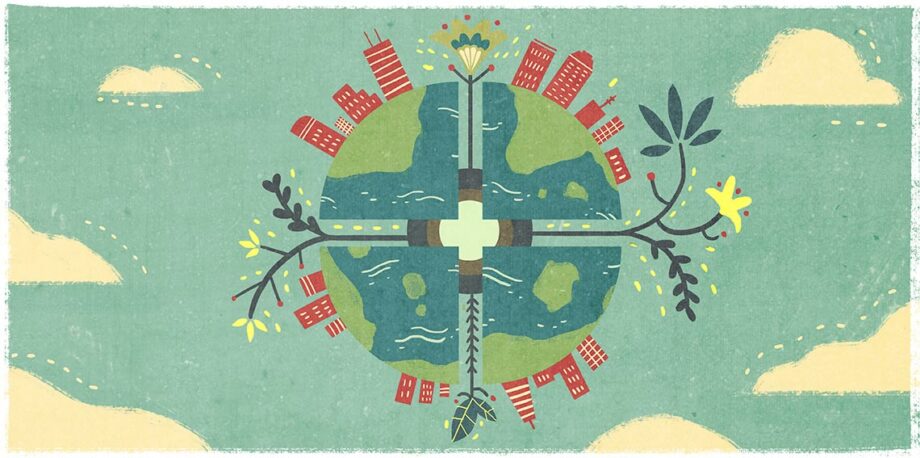August 19, 2014 — “Corporate sustainability reporting is dead.”
Not the words of a anti-corporatist radical green — but of Peter Bakker, president and CEO of the World Business Council for Sustainable Development, on stage at this year’s EAT Forum in Stockholm.
You could feel the shock wave move through the audience. Corporate sustainability reporting has taken off in recent years, with thousands of companies publicly disclosing everything from use of recycled materials to energy savings to water withdrawals to biodiversity and habitat protection efforts.
Some observers call such reports nothing more than public relations. Corporate sustainability reporting, though, has been one of the few environmental memes that’s actually gained ground in the last decade.
Corporate sustainability reporting is just one example of how marginalized sustainability and conservation are in public and private decision making.
But Bakker’s declaration wasn’t about the trend of corporate sustainability reporting — it was about its substance, or lack thereof.
His point was that corporate sustainability reporting separates sustainability from the real business of business, a sidelining that’s fatal to real sustainability (and not smart for business, either).
I’ll go Bakker one further: Corporate sustainability reporting is just one example of how marginalized sustainability and conservation are in public and private decision making.
Yes, we’ve made progress. But the numbers we tout as measures of green hope and success are often not as good as they first sound.
The Marginalization of Natural Capital Accounting
For instance: 69 countries have committed to natural capital accounting — the act of adding natural capital to the government accounts that track national assets and income flows.
These national accounts are what countries use to calculate gross domestic product and other key economic indicators. Good news, yes? Now both the public and decision makers will understand how unsustainable use of natural resources is hurting their national economies.
But these income and wealth accounts will be satellite accounts — that’s accountant speak for stuff that should be important, but isn’t used to calculate core metrics like GDP.
Governments will talk the talk but not walk the walk on counting nature as a core part of national wealth.
While satellite accounts can be informative, they’re largely relegated to the periphery — especially in the news. When was the last time you read or even heard about a major report on unpaid household labor in the mainstream press?
Natural capital data will be launched as satellite accounts — distantly circling GDP and other core accounts that get all the attention. This is a clear signal that governments will talk the talk but not walk the walk on counting nature as a core part of national wealth.
Another example: China has been a global leader in developing subsidy programs that encourage farmers to manage their land more sustainably. The largest subsidy program of this kind is the Grain for Green program, which at its peak in 2009 gave some $6.8 billion to rural farmers — a staggering figure, and one often cited as a huge advance for sustainability.
Unfortunately, this figure accounted for less than one-third of China’s total direct agricultural subsidies that year (not even counting import tariffs or price programs), few of which give any consideration to sustainability. The program’s investments have fallen, and it now makes up only about 19 percent of China’s total agricultural subsidies.
So what’s the trend for sustainable agriculture in China?
The situation is even more dramatic in the United States. Conservation-related agricultural subsidies totaled $38.9 billion from 1995 to 2012, an enormous figure. But other agricultural subsidies moved almost an order of magnitude more federal funds over the same period, coming in at $252 billion.
Let’s Make Sustainability Relevant to Major Decisions
The sustainability victories we are claiming these days are still marginal to the core work of the world. They are small steps in the hinterlands of our major social and economic systems. I am not suggesting they are not advances — compared to past efforts on sustainability, they are monumental. They are just nowhere near monumental enough.
We need to shift our focus to that core work, and find more direct ways to understand how the environment supports and is impacted by major decisions:
All agricultural subsidies should be designed with real consideration of their environmental costs relative to production benefits. Subsidies that lead to over-fertilization and downstream pollution should not be countered by costly water treatment. Instead, they should no longer be allowed.
Corporate supply chains will not be truly sustainable until sourcing decisions directly consider environmental and social risks.
We also need the same kinds of major shifts in core subsidies for energy and mineral extraction.
Corporate supply chains will not be truly sustainable until sourcing decisions directly consider environmental and social risks, and companies go beyond environmental disclosure to cease sourcing from water-stressed, soil-stressed, mineral-stressed and climate-stressed regions. Even with current reporting, we should aim for much higher uptake. CalPERS, the largest public pension fund in the United States, takes account of environmental, social and governance factors in all of its investments. This should be the norm.
Governments must put natural capital into accounts in ways that matter for core economic indicators. Other entities that use information on governments — like the World Bank and credit rating agencies — should follow suit, using natural capital information in debt ratings and loan determinations.
Come on, sustainability revolution. It’s time to go big — or go home.
![]()
Editor’s note: The views expressed here are those of the author and not necessarily of Ensia. We present them to further discussion around important topics. We encourage you to respond with a comment below, following our commenting guidelines, which can be found here. In addition, you might consider submitting a Voices piece of your own. See Ensia’s “Contact” page for submission guidelines.
This article was originally published on the science blog of The Nature Conservancy, Cool Green Science. Read the original article.
Ensia shares solutions-focused stories free of charge through our online magazine and partner media. That means audiences around the world have ready access to stories that can — and do — help them shape a better future. If you value our work, please show your support today.
Yes, I'll support Ensia!
